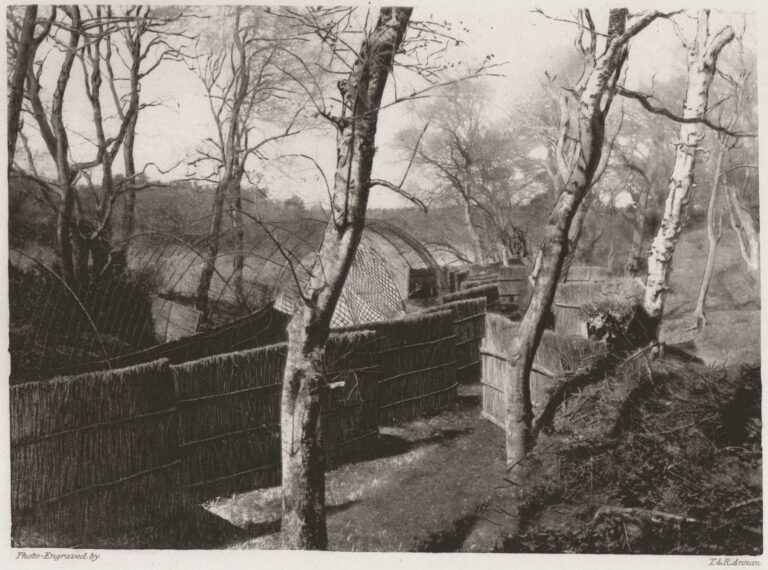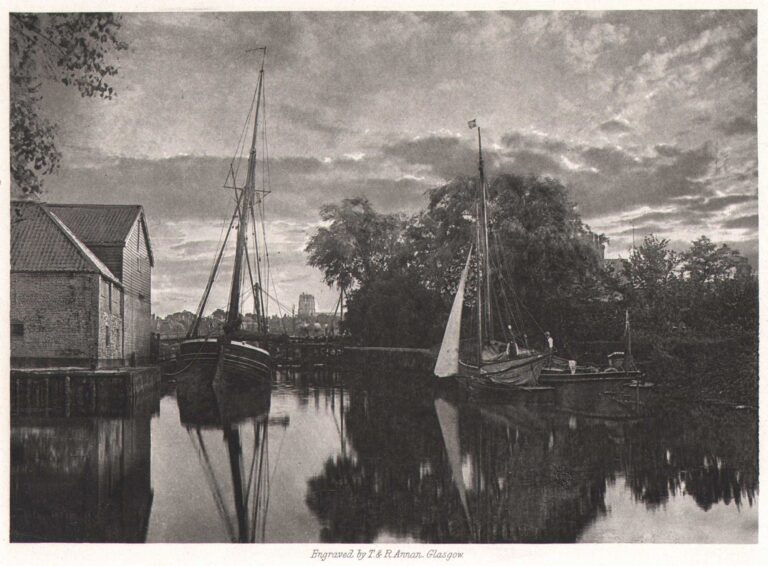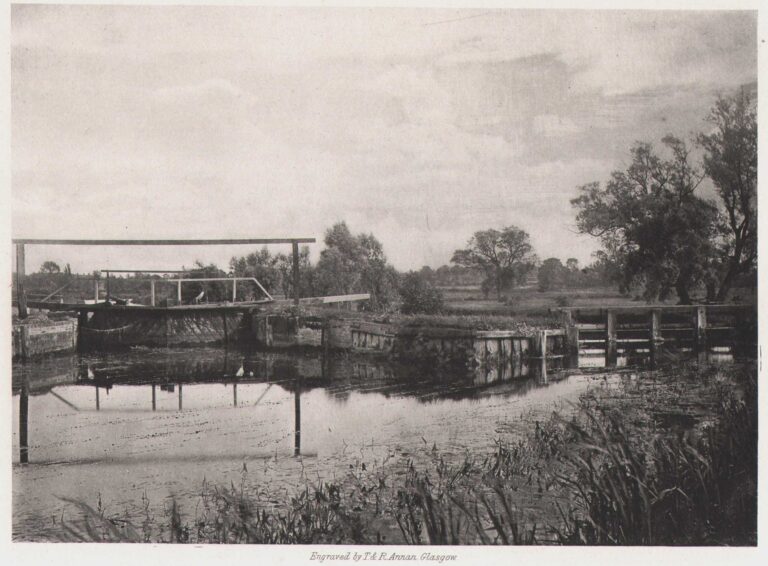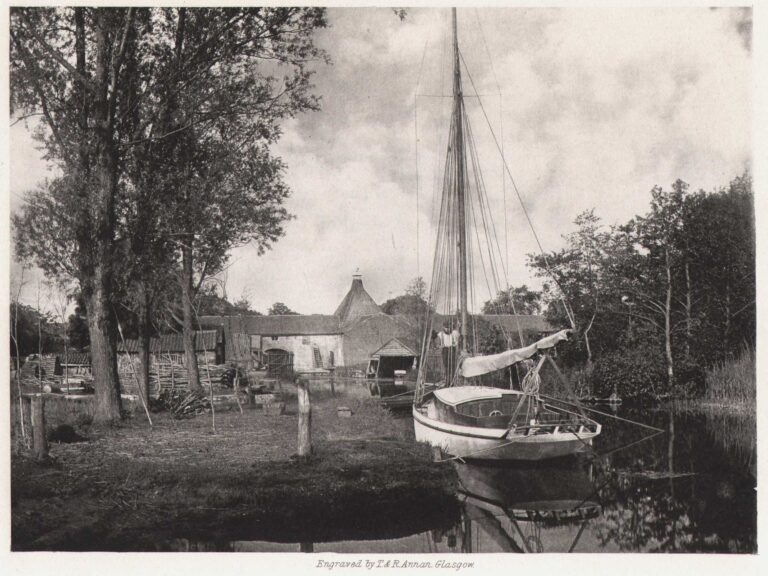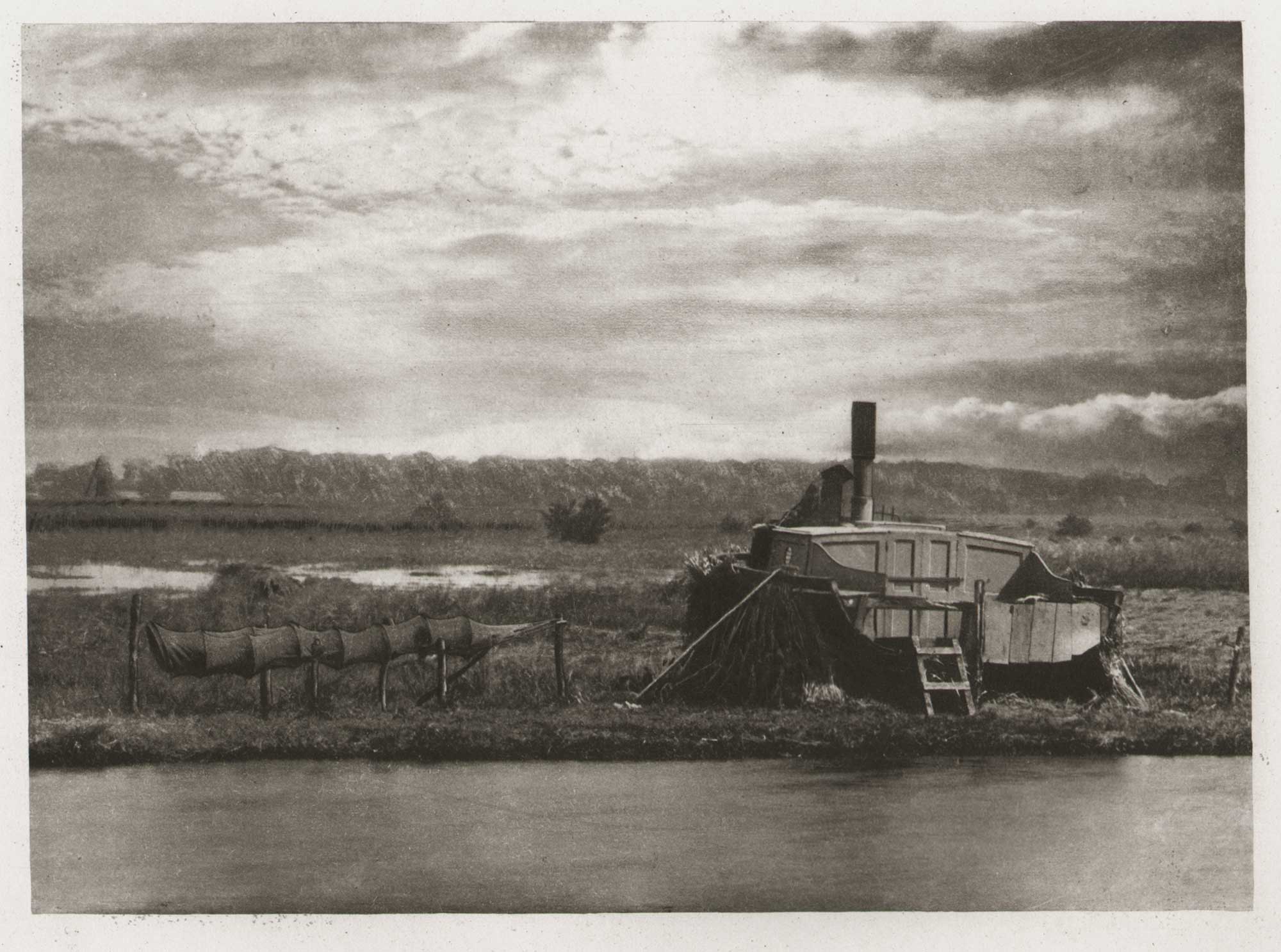
Eel Set, Irstead Shoals | River Ant
“Then we passed Irstead shoals, where the river is but five feet deep, with a level, hard, gravel bottom beloved of perch. Then came one of the most picturesque eel-fisher’s abodes we had seen, being a small yacht hauled up on the bank, and propped up, with the stern cut off, and a ladder leading into the cabin.” -G. Christopher Davies, 1883 (1.)
“Eel-sets in the East Anglian rivers are nets set athwart the stream for the purpose of catching a certain species of eel in its autumnal migration to the sea; and for many years there has been a growing dislike to them in the minds of anglers. Up to the present time there has also been a profound ignorance as to the mode of setting and working these sets, even among persons who have passed their lives upon the rivers.” –Blackwood’s Edinburgh Magazine, Jan. 1882
Located on the River Ant in the Norfolk Broads is Irstead Shoals. From Historic England, some background on the history of the eel-set: “The tradition of eel catching in the Broads dates back to the medieval period. An eel sett was a place both for eel catchers to put out nets at night and a room for their accommodation. These setts were typically in isolated and rural places along the river. Nets were stretched across the river and held in place by a stake on either side of the bank. The nets were tarred to make them stiff and they had a heavy chain to keep them at the bottom of the river. During the day the nets were left on the riverbed but raised at night to catch the eel which are funnelled down the nets and eventually trapped in the ‘poke’. Catchers therefore would have to keep watch for boats so that the nets could be lowered, using a winch, to allow safe passage. There were many setts along the rivers in Norfolk but numbers dramatically started to dwindle in the C20.”
George Christopher Davies: 1849-1922
Davies was “a prolific photographer and writer who played an important role in encouraging popular awareness of the Norfolk Broads.” (2.) The following biography of the artist courtesy: Norfolk Through a Lens: A guide to the Photographic Collections held by Norfolk Library & Information Service –
Born in Shropshire, Davies practised as a solicitor for a time; he first came to Norfolk in 1871 to serve part of his articles. He was later to become Chief Clerk at Norfolk County Council in 1906, also serving as Clerk of the Peace. In his private life he was a nature lover, sportsman and photographer. His skills as a writer did much to popularise the Norfolk Broads as a rural idyll and holiday destination. When he was 27 he wrote ‘The Swan and her Crew’ an adventure story for boys set in the Norfolk Broads which created a great interest and enthusiasm for the area. His major work ‘Handbook to the Rivers and Broads of Norfolk and Suffolk’ was published in 55 editions and contained 12 of his own photographs. Davies also produced other books about the Broads, sailing, Belgian waterways, natural history, fishing, adventure books for children and even some on government administration. Towards the end of his life he acquired Burnt Fen Broad and spent many hours there during his retirement.
- Excerpt, G. Christopher Davies: Norfolk Broads and Rivers: Or, The Water-ways, Lagoons, and Decoys of East Anglia, William Blackwood & Son, Edinburgh and London, p. 60
- George Christopher Davies: Wikipedia accessed September, 2025
